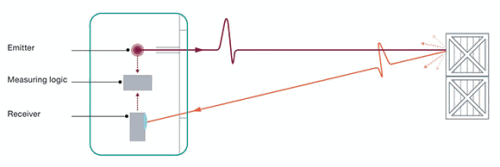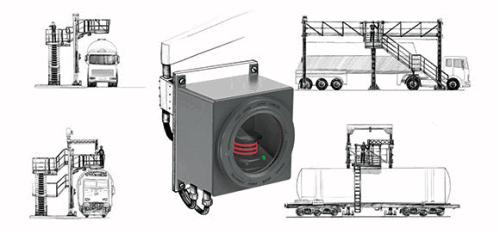

Whether in tank trucks by road or in tank cars by rail, chemicals must be transported with caution because more than 40 percent of such products are classified hazardous.
Despite this percentage of high-risk freight, the procedure for filling vehicles and train cars with these substances is not always the same, since gases, liquids and granules have different properties. In addition, there is often a risk of explosion. This means creative solutions are needed to provide the necessary level of safety.
Voortmann & Co. KG Steuerungstechnik is a market leader in control, compressed air, and loading and spraying systems, based in Issum, Germany. Manuel Greefrath, a loading technology specialist at the company, is aware of the risks involved in loading chemical substances: “Filling road tankers and tank cars is not usually a fully automated process, but instead, is carried out by workers on a platform. This means that one wrong decision can have disastrous consequences for people and the environment. Because the vehicles can be up to four meters tall, employees have to move the loading platforms to the appropriate height, which poses yet another risk of damage.”
The workers also wear heavy-duty clothing in these environments, which sometimes includes breathing apparatus. The restricted freedom of movement and reduced field of view increase the likelihood of an error. This is where the Voortmann experts come in, with solutions that include a wide range of fall protection systems tailored to specific loading functions. For several years now, the experts have been installing light barriers and contact strips in these constructions. However, exceptional potential was discovered in the field of laser sensors. This technology enables Voortmann to make loading safer and more efficient.

More automation, more safety
The underlying idea: A platform’s safety cage not only moves at the touch of a button, but also uses a 2-D Lidar sensor installed underneath the construction to detect obstructions. If the sensor detects a foreign object or a tanker part, for example, the scanner emits a signal that activates a horn or warning light and stops the lifting platform. This automatic shutdown function makes damage and crashes a thing of the past. To implement these applications, Voortmann relies on the R2000 2-D Lidar sensor from Pepperl+Fuchs, which is commonly used in automotive manufacturing, warehousing and auto-guided transport systems.
However, this award-winning sensor also impresses outside of factory halls and warehouses, reports Julian Krato, product specialist for Complex Systems at Pepperl+Fuchs: “Multiple evaluations from individual scans and an adjustable detection field allow us to recognise and filter out obstructions such as raindrops and snowflakes. The R2000 also has an IP67 rating and is therefore well suited for outdoor use.”
The technical core of the R2000 is Pepperl+Fuchs’ own Pulse Ranging Technology (PRT), which performs an enormous number of individual measurements in a short period of time. With up to 54 000 pulses per second and a high angular resolution, the sensor achieves extremely precise measurement results and detects obstructions with virtually no delay. “From a safety perspective, fast and accurate PRT is the ideal choice for our applications,” says Greefrath, outlining the other advantages of the R2000. “The 360° measuring angle also means that we can manage with a single sensor, which reduces costs for our customers.”
Industrial sensors meet explosion protection
These end customers continue to surprise with challenging new requirements. A customer recently approached Voortmann with the request to use a fall protection system based on the R2000 for tank cars in ATEX Zone 1. This presented a real challenge because both the operating voltage of the R2000 and the optical and electromagnetic radiation it emits are potential ignition sources in hazardous areas. Upon receiving the customer request, Greefrath and his colleagues came up with the idea of installing the sensor in an ATEX-certified enclosure. As Greenfrath explains, they did not have to look far to find a partner to implement this: “Since Pepperl+Fuchs has an excellent international reputation in the fields of industrial sensor technology and electrical explosion protection, we were sure that we would find a solution together. The positive experiences we had during our collaboration on non-explosion-protected solutions also supported this.”
Pepperl+Fuchs eagerly accepted Voortmann’s request, as Henning Hansen, process automation sales engineer, explains: “We had to solve a bit of a paradox here. How can one put a photoelectric device, which logically requires a clear line of sight to operate properly, into an enclosure?”
The answer to this crucial question was mounting the R2000 in a Pepperl+Fuchs GUB series enclosure made of copper-free and corrosion-resistant aluminium. This enclosure has Ex d (flameproof enclosure) protection and an integrated viewing window that enables the sensor to scan below the lifting platform. A flat disc and an R2000 tilted 15° toward the disc were used to avoid light refraction and possible scattering, which could distort the signal.

Multiple benefits in one solution
Voortmann now benefits in many ways from this jointly developed solution. By working closely with Pepperl+Fuchs, the company gained valuable new insights into combining laser sensors and explosion protection. At the same time, Pepperl+Fuchs will be able to offer its own customers an integrated system for non-hazardous and hazardous areas that can be used internationally and in Zones 1, 2, 21, and 22. This ensures very high efficiency in planning, mounting, commissioning, storage, and subsequent service. The technical core of the R2000 is Pepperl+Fuchs’ own Pulse Ranging Technology (PRT), which performs an enormous number of individual measurements in a short period of time. With up to 54 000 pulses per second, the sensor achieves extremely precise measurement results.
| Tel: | +27 10 430 0250 |
| Email: | [email protected] |
| www: | www.pepperl-fuchs.com/en-za |
| Articles: | More information and articles about Pepperl+Fuchs |

© Technews Publishing (Pty) Ltd | All Rights Reserved